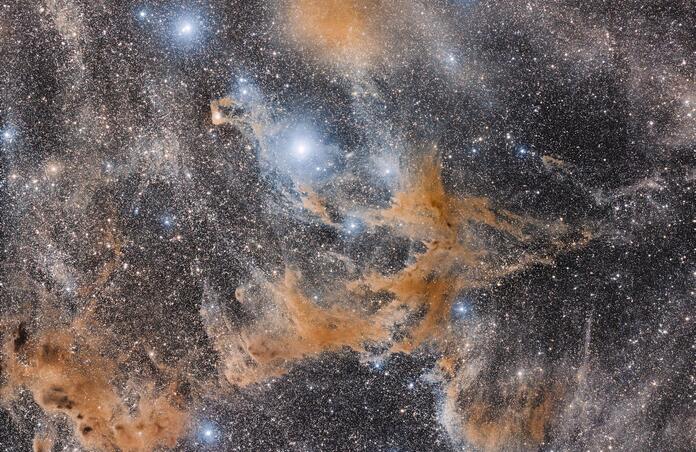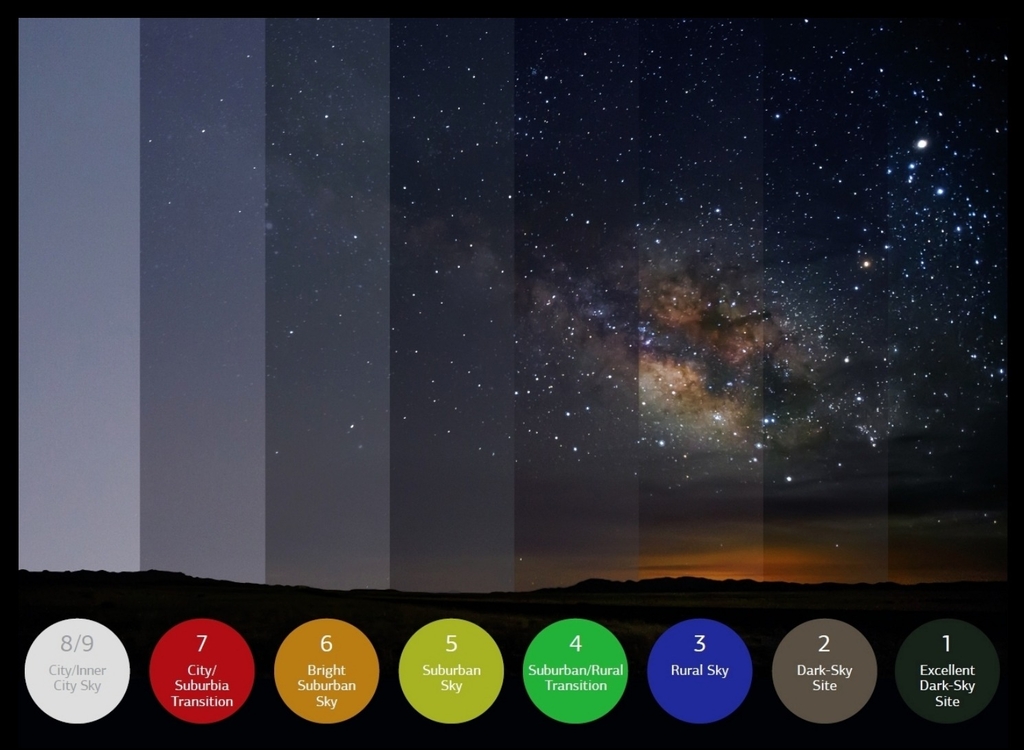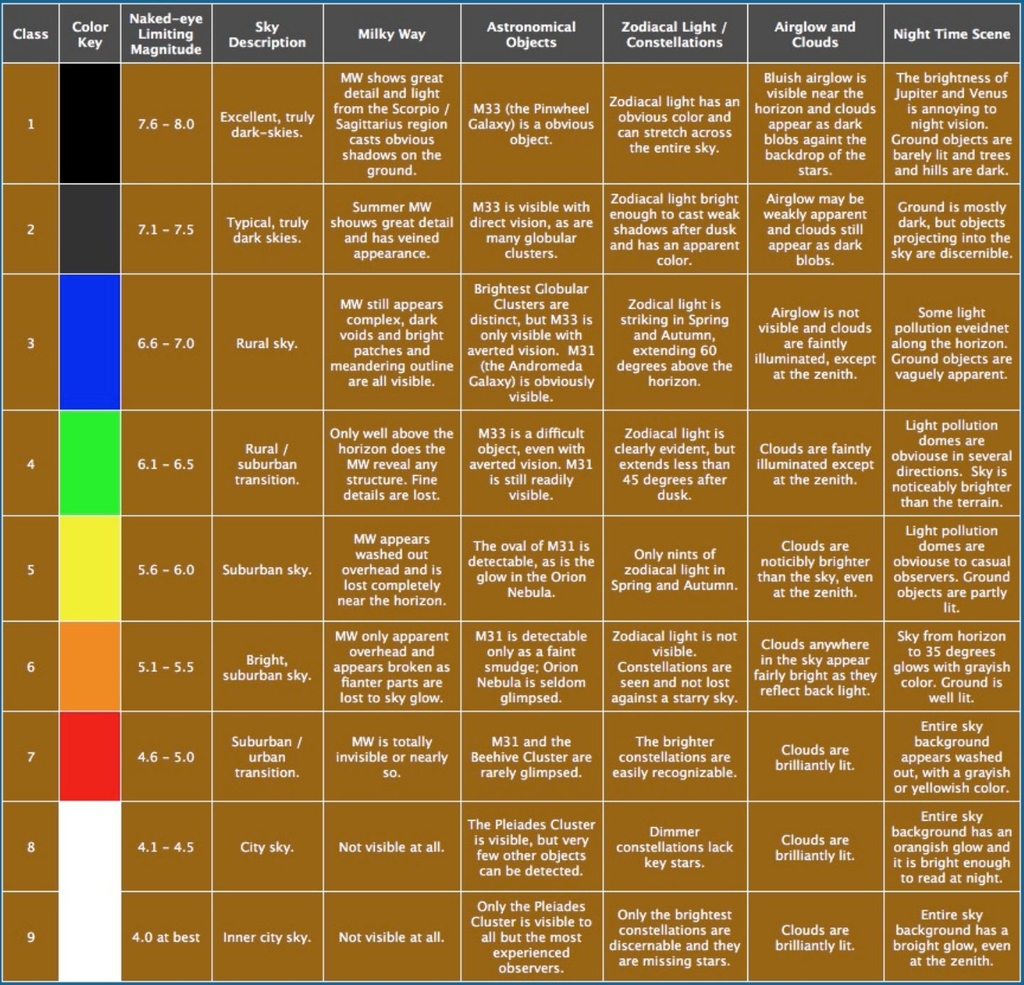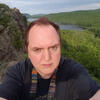The Effects of Light Pollution In Deep Sky Imaging

Tonight I am going to talk a little bit about light pollution and how it effects us imaging from home. I'll also include a link to a great place to find a good dark site near you, if you have one that is.
Conventional wisdom says that for every magnitude of sky brightness you gain you will have to image about 2.5 times as long as someone in a place that is a full magnitude darker to get the same signal to noise ratio. Now that isn't taking into account things like how long you can expose for, extinction, etc. It is simply saying that as a general rule (and depending on the target and how bright it is) you will need 2.5 times as much exposure to get the same result.
So that means at a true dark site, Bortle 1 with mag 22 skies being the best, and trust me, there is nothing like imaging or even observing from Bortle 1, something that takes 2 hours of imaging time to get a good image would take 5 hours in magnitude 21 a bit on the bright side of the middle Bortle 4 skies. That same thing would take 12.5 hours in magnitude 20 skies which is firmly in the middle of Bortle 5, 31.25 hours in magnitude 19 skies which is on the bright side of Bortle 6, 78 hours and 7.5 minutes at magnitude 18 which is firmly in that B8/9 range (think in the middle of Detroit) or over 195 hours in magnitude 17 skies that are found in some of the more brightly lit big cities. Chicago has some magnitudes in the 16.9 range and I don't even want to think of what people in the middle of Las Vegas with its magnitude 16.65. You're well into 200+ hours those places.

To put in a real life example, I have a colleague who lives roughly 15 miles away from me. He was talking about maybe trying astrophotography because he saw what I do from home when we finally get clear skies. Now 15 miles (that's 24 km for all the non-Americans here) isn't really all that far, but what a difference that 15 mile drive makes. My place is magnitude 20.85, firmly, though on the brighter side of Bortle 4. His place is magnitude 18.80 and in Bortle 7. Looking north from my house definitely get you a nice light dome. Let's round his up a tiny bit, because 0.05 magnitude better than what he has isn't really going to mean that much where he is. So, that means that a thing that I could image in 2 hours would take him 12.5 hours to get the same SNR.
A big takeaway from this should be that if you're imaging, and you can get to a darker place in a reasonable amount of time it is well worth it. An excellent source to see how far you have to go to get a nice improvement is https://www.lightpollutionmap.info/ because driving for 30 minutes each way can have the potential to shave hours off of your time needed for imaging. Of course you will see less improvement as you get down to the higher end of B4, B3, B2, and B1 stuff, thought there will be an improvement.
I have attached a representation of what the Bortle Scale looks like visually, and a description of what you can expect with each Bortle number. This is also why it is important to do what you can to bring the night back, not only for yourself, but for others who may want to get into this hobby, You wouldn't believe what people's reaction is the first time they see the milky way with their own eyes.

Anyway, I know you also want to see a nice image taken from the TelescopeLive network, so here's some stuff taken in the last few months with AUS-2. It is a bunch of dust in Chameleon. You can get all the images on these https://app.telescope.live/click-grab/all?target=Dark%20Nebula%20Complex and these https://app.telescope.live/click-grab/all?target=Dust%20in%20Chamaeleon One Click Observations. I put them together to get the attached image. I don't know about you, but I certainly am glad to have access to telescopes sitting on the good end of the Bortle scale!
This blog post was originally published in our Telescope Live Community.
The Community represents Telescope Live's virtual living room, where people exchange ideas and questions around astrophotography and astronomy.
Join the conversation now to find out more about astrophotography and to improve your observation and post-processing skills!
